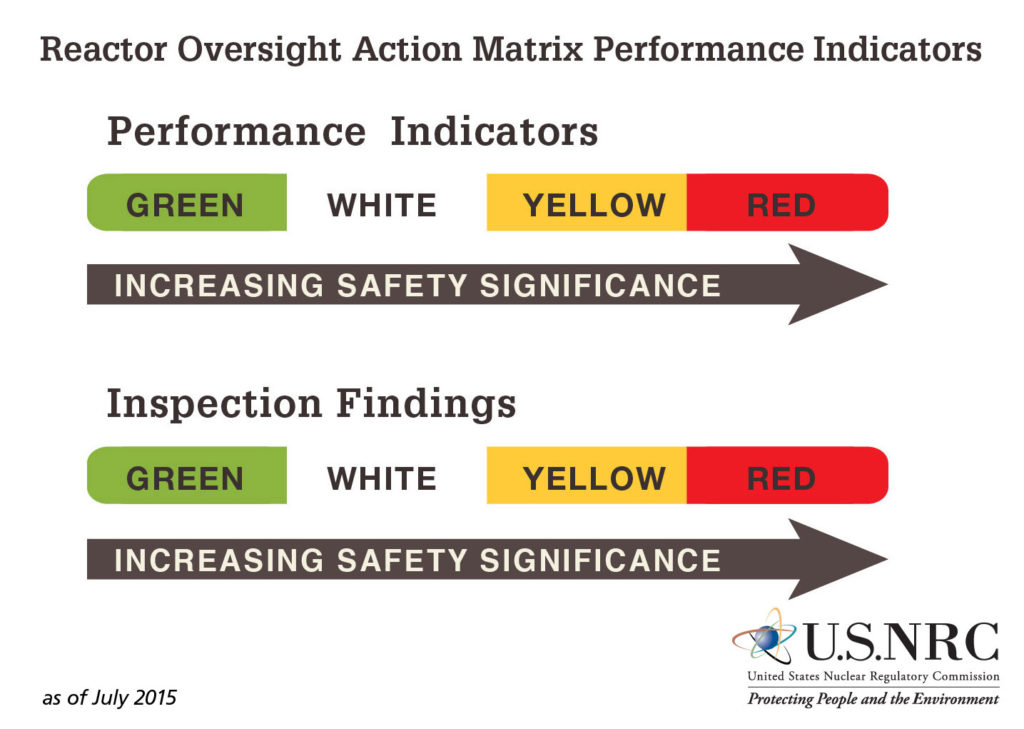One of my favorite board games growing up was Monopoly. It featured a playing surface with four corner squares. Jail occupied one of the squares, but player’s pieces could be placed on the square as “Just Visiting.”
The Nuclear Regulatory Commission (NRC) has four regional offices. NRC Region II monitors the operating nuclear reactors in the southeastern United States and the new reactors under construction throughout the entire country (which actually turns out to be just the southeast again). The NRC Region II’s offices are located in downtown Atlanta, Georgia.
When the NRC’s inspectors identify potential violations of regulatory requirements, the respective owners are invited to Region II to explain their sides. Depending on the nature of the prospective violation, some of the trips must seem more like being in jail than “Just Visiting.”
Twice each year, Region II conducts a multiple-day counterparts meeting in its offices. Resident inspectors from each operating reactor site and the sites with reactors under construction gather with reviewers, supervisors, and managers in the regional office.
Catherine Haney, the NRC’s Regional Administrator for Region II, invited me to make a presentation on June 7, 2016, during one of the counterparts meetings. Ms. Haney asked me to share UCS’s perspectives on the NRC’s Project AIM downsizing initiative as I had done earlier in the year during a session at the NRC’s annual Regulatory Information Conference. She also invited me to share any perspectives on a similar downsizing effort being undertaken by the nuclear industry, called Delivering the Nuclear Promise. It was clear from our communications and from my presentations at similar gatherings in NRC Regions I and III that I would be “Just Visiting” Region II.
My presentation to the nearly 200 people at this counterparts meeting focused on the need for backstops to guard against the good intentions of Project AIM and Delivering the Nuclear Promise having unintended consequences or getting side-tracked.
Q&A, and Evaluating the NRC
Following my presentation, the session opened for questions and answers. The final question was asked by Joey Ledford in the Region II’s Office of Public Affairs. Paraphrasing Mr. Ledford’s question, he asked if the shoe were on the other foot and I was evaluating the NRC’s performance using a scale like that used in the agency’s Reactor Oversight Process, what column of the Action Matrix would I put the NRC?
(Column 1 is where the NRC places reactors with Performance Indicators and NRC inspection findings in the expected bands. Columns 2, 3, 4, and 5 are where NRC places reactors with more and more indications of declining performance.)
I have been asked lots of questions over many years at UCS. By now, most questions are repeats or versions of prior questions, which makes answering them easier. Mr. Ledford posed a new one.
If I had an axe to grind, Mr. Ledford was offering up the NRC’s neck as a target. I could have flippantly responded “6.” Having known Mr. Ledford for several years, I knew that the question was asked in good faith and deserved an honest response. (Besides, I had to pass through a metal detector before entering the Region II’s offices, so I was axe-less.)

Infographic of the Reactor Oversight Action Matrix Performance Indicators (Source: Nuclear Regulatory Commission)
After a brief pause, I said that I would place the NRC in Column 1 of the Action Matrix, with some Green findings to work through. I had paused to decide between Columns 1 and 2. Column 2 is warranted when one or more White findings suggest performance below “normal” levels. I recalled that the Green to White threshold for the ROP’s Performance Indicators was established based on actual reactor operating experience over a multiple year period in the mid-1990s. The threshold was defined such that 95% of the time, the fleet of reactors actually performed at or above that level. I lack the data, but strongly suspect that the NRC does the right thing at least 95% of the time (and also strongly suspect that I spend most of my time whining about that 5% or less time.)
I think it is unfair to say or write something bad publicly about an organization that you would not say to their faces. It seems equally unfair to say something good to their faces, but to do so in private. Thus, this commentary posted to the All Things Nuclear blog repeats in a more public venue what I had said about the NRC in a more private setting.
That does not mean that I will rein in my whining about the times the NRC does not do the right thing. Instead, it suggests why in whining about those times that UCS does not call for the NRC to be abolished, replaced, or overseen by a more capable entity. We seek changes that enable the NRC to be right even more often.
In fact, UCS’s nuclear power safety project seeks to someday make this question moot by having the NRC’s performance so clearly and consistently good that there’s no reasonable doubt in any one’s mind which column the NRC occupies. Reaching that objective might make me useless at UCS, but it would be best retirement reason I could imagine.
